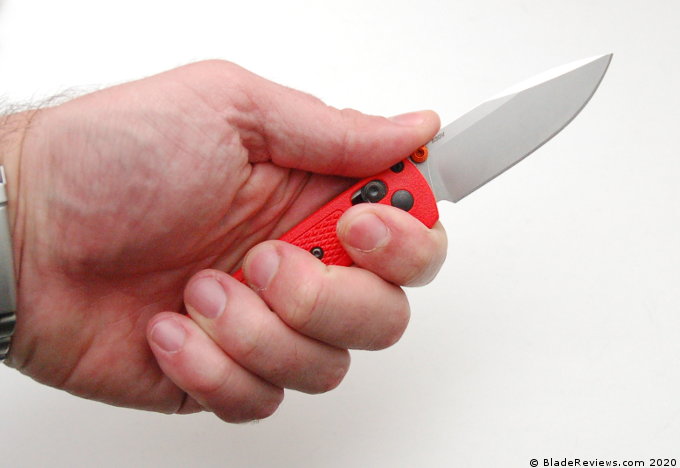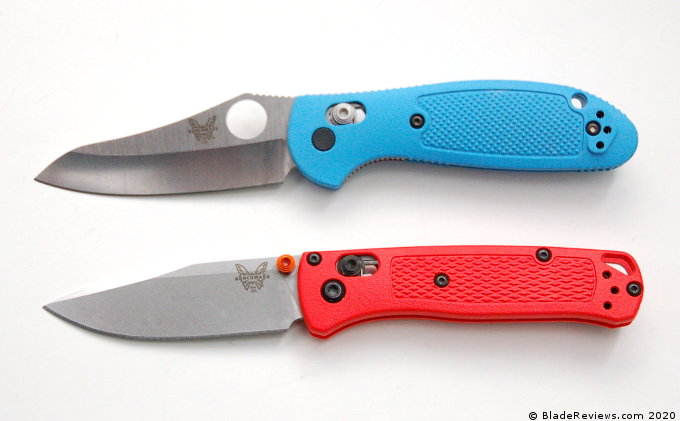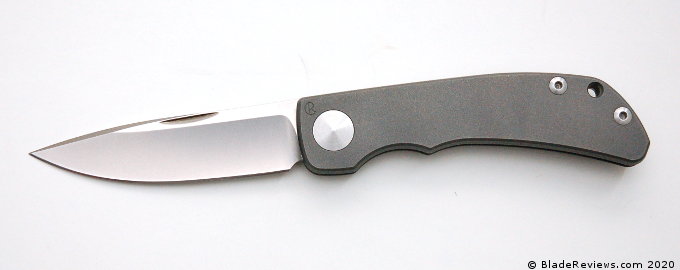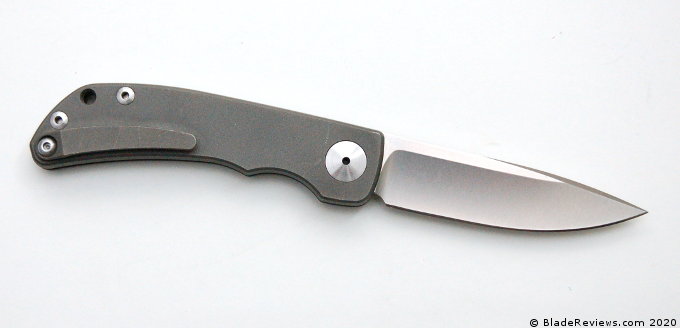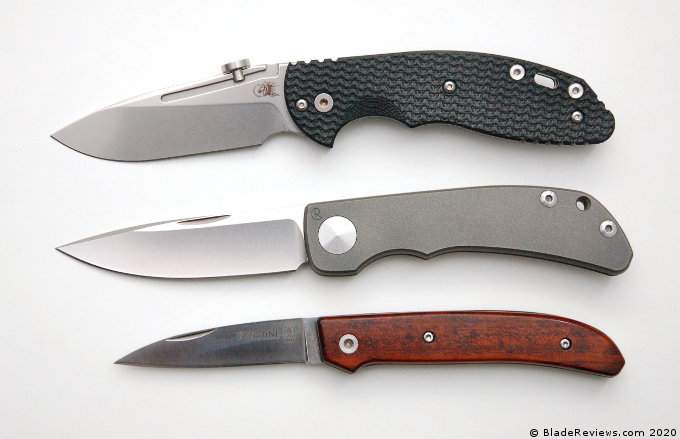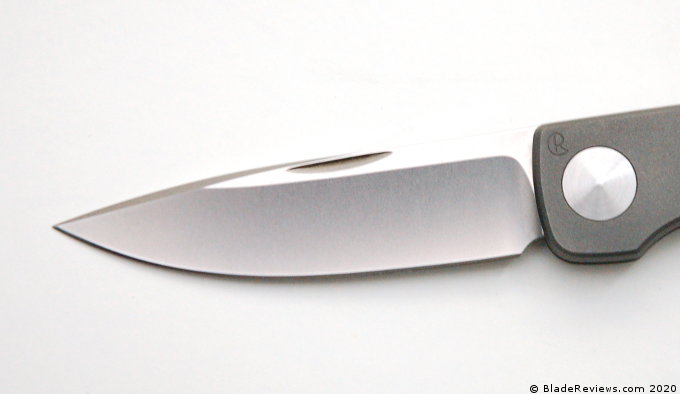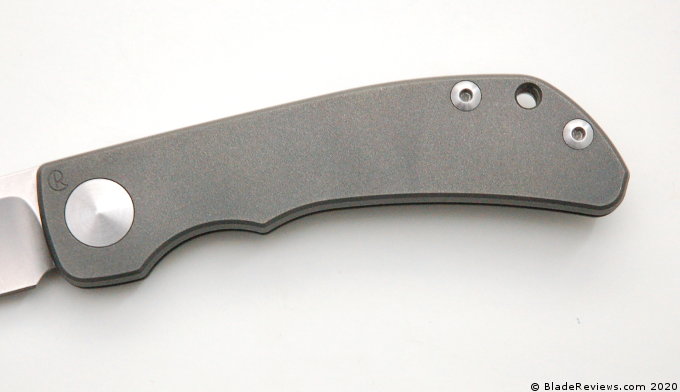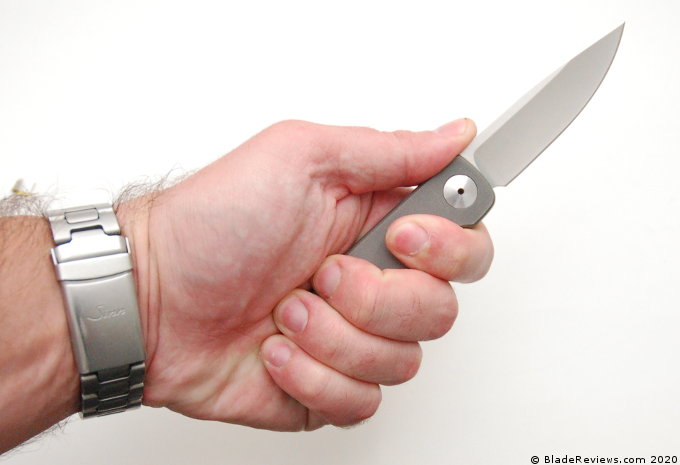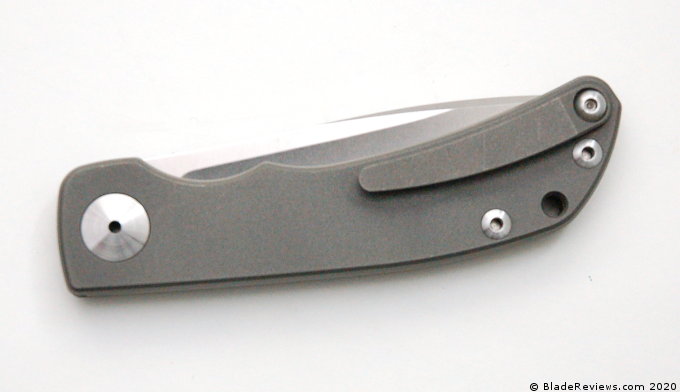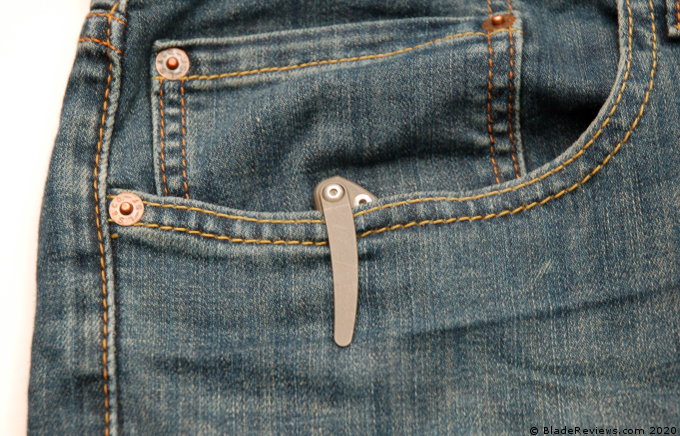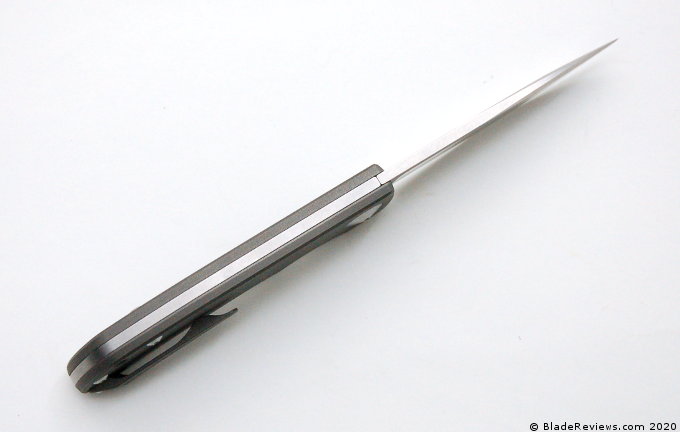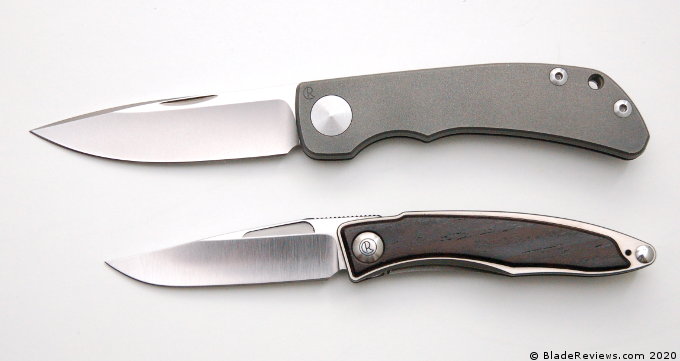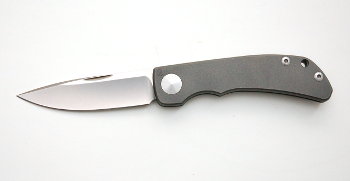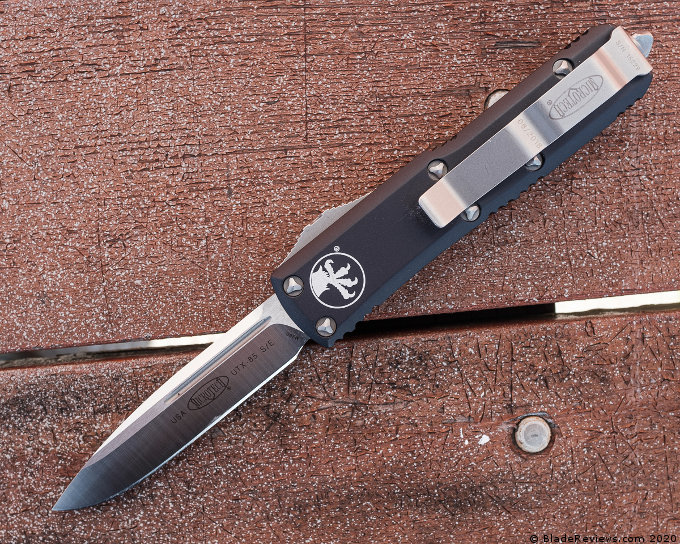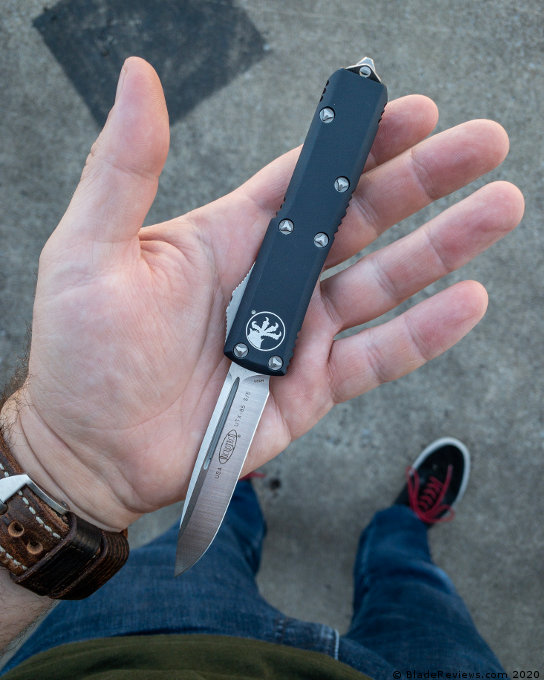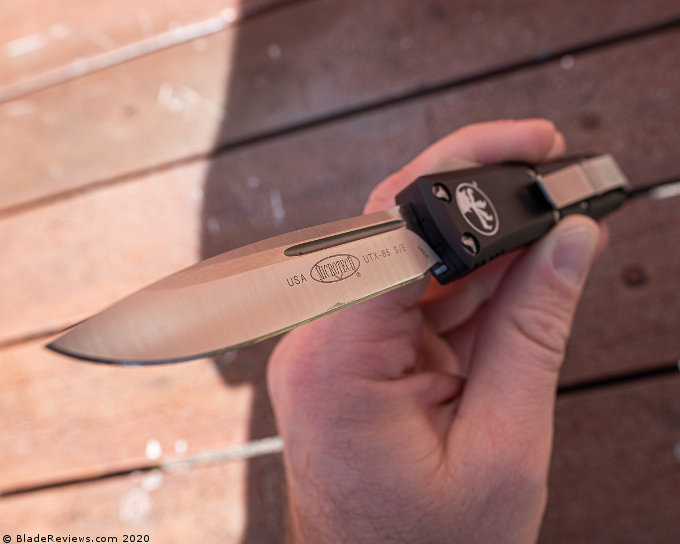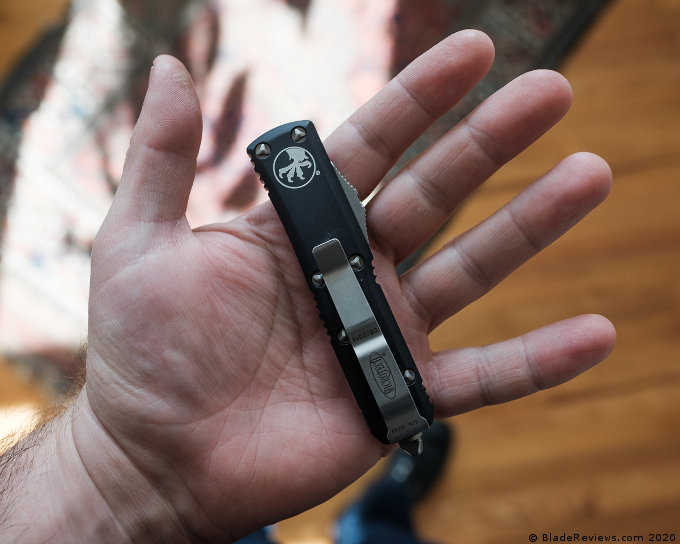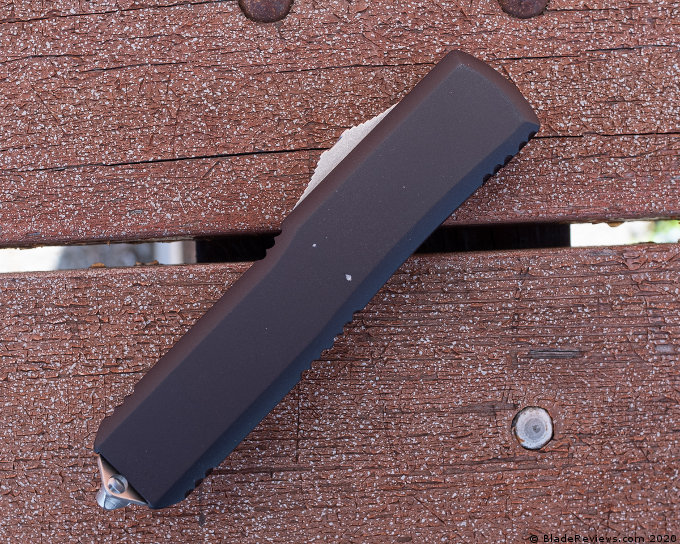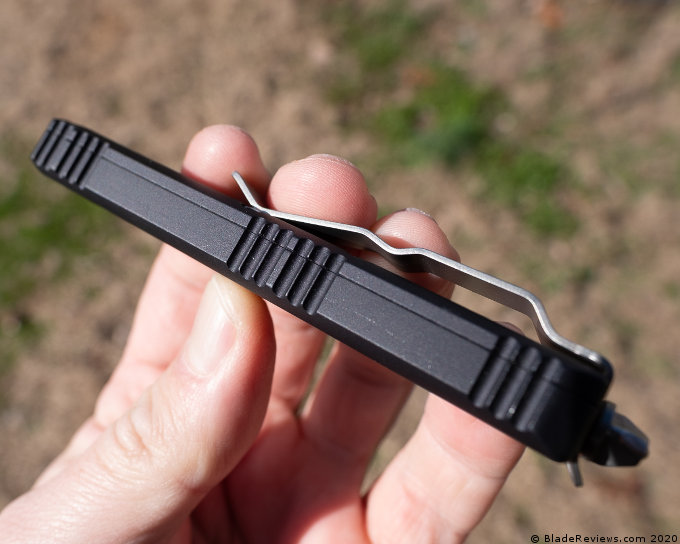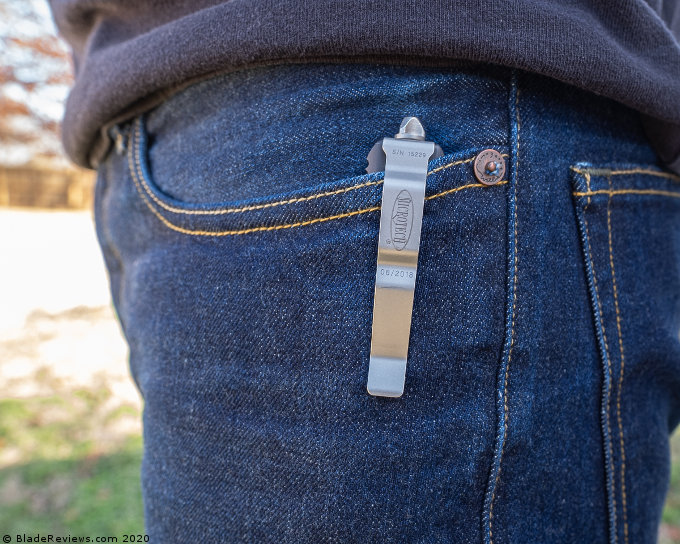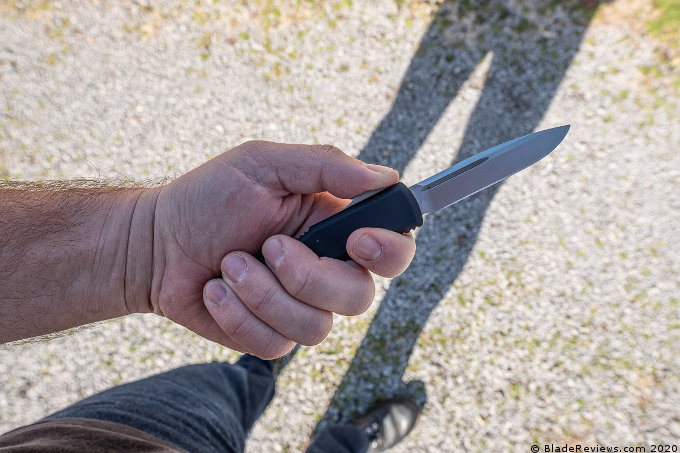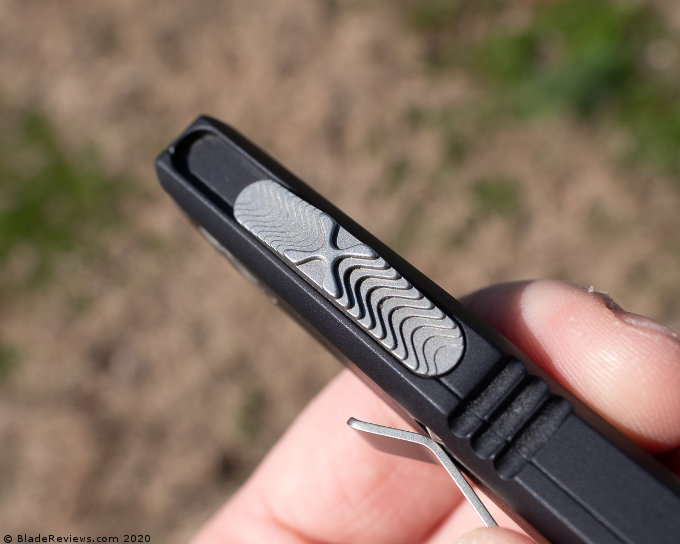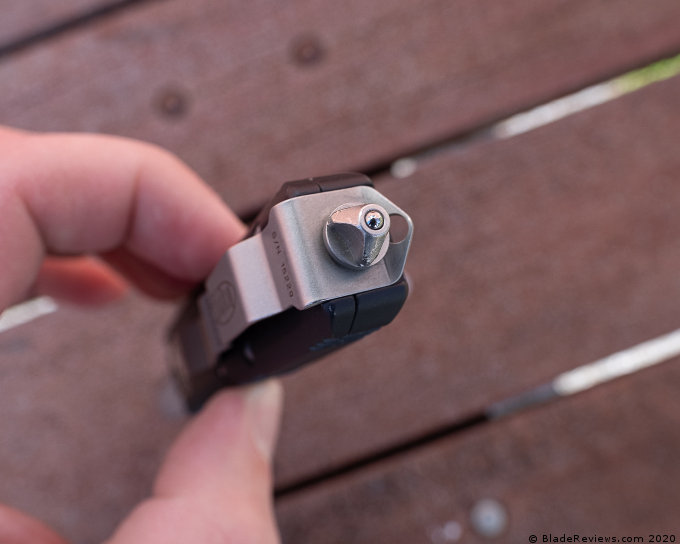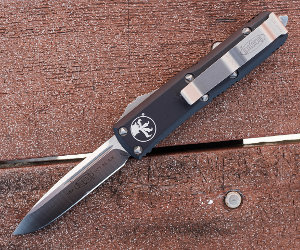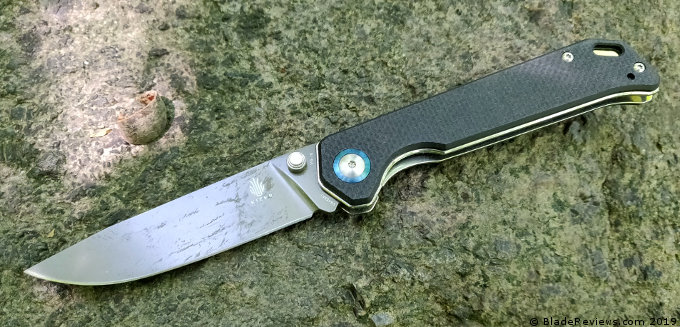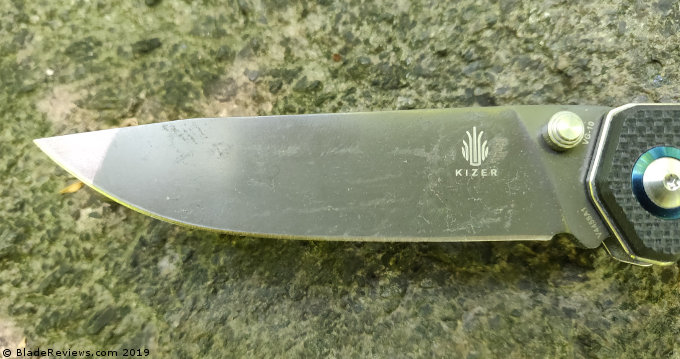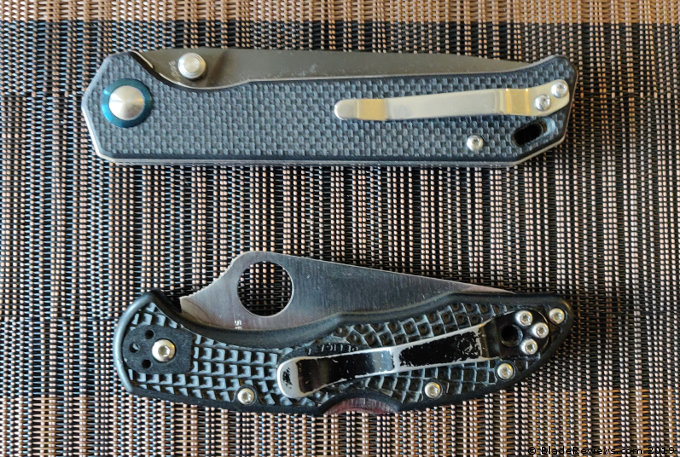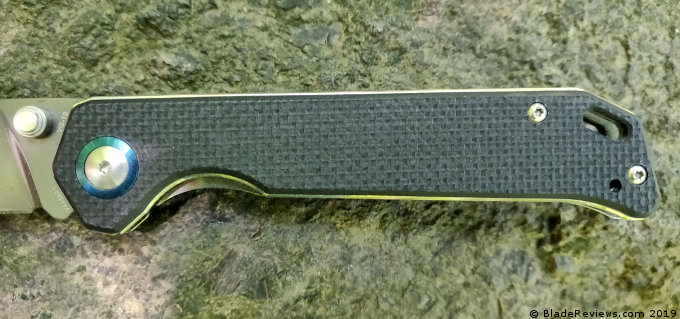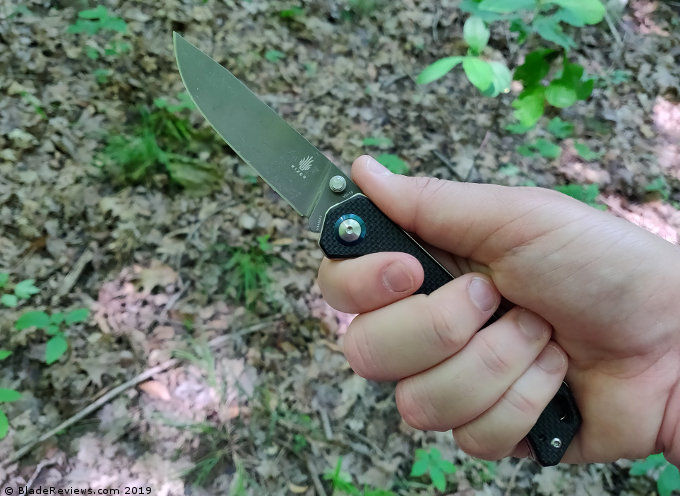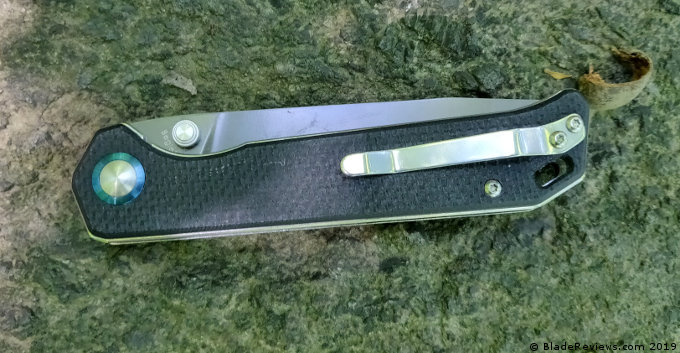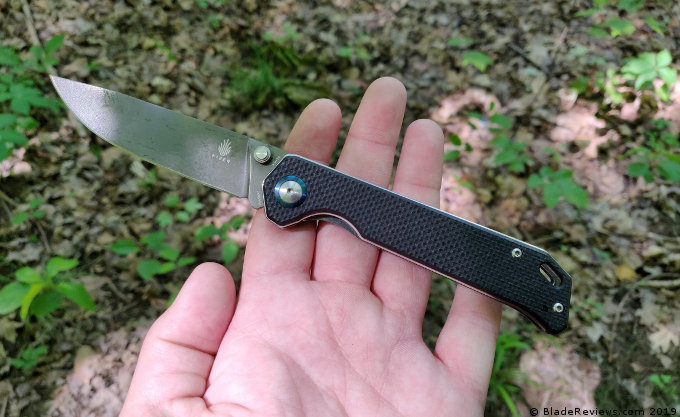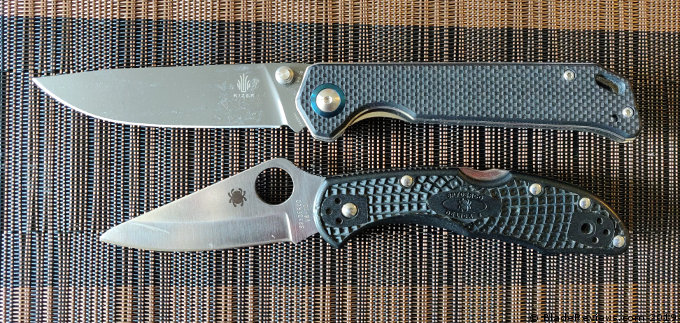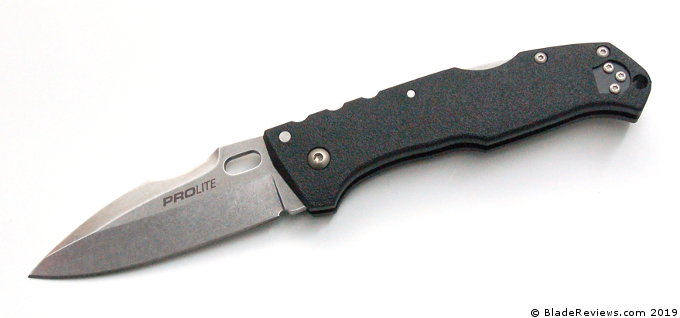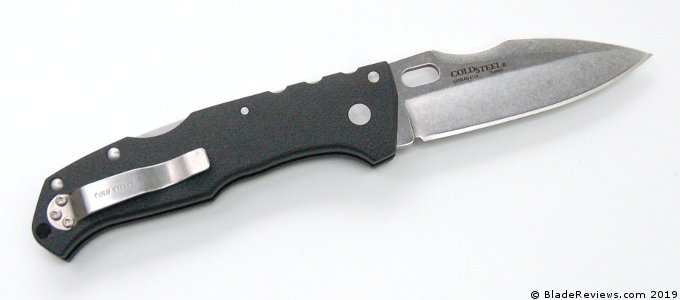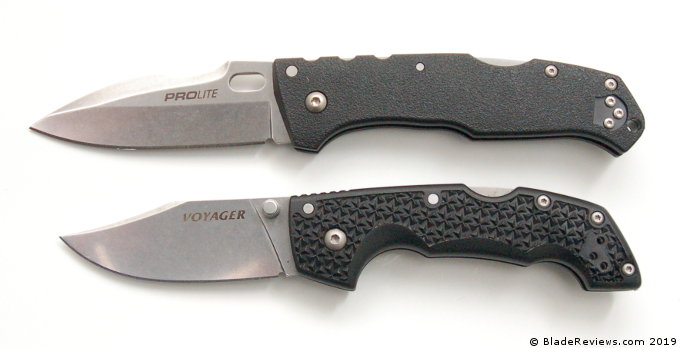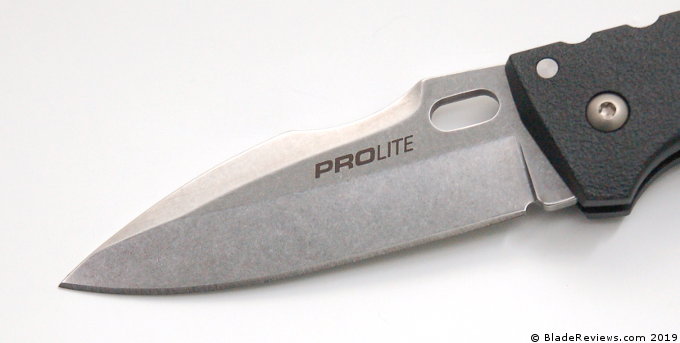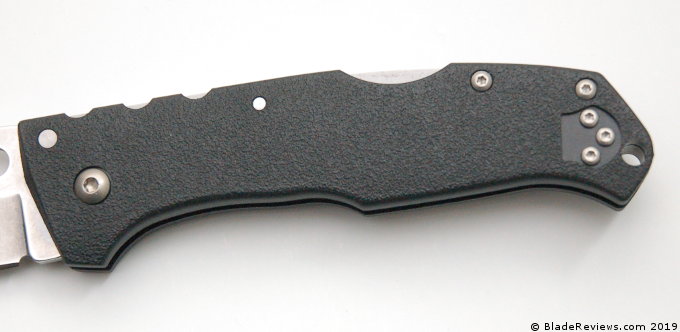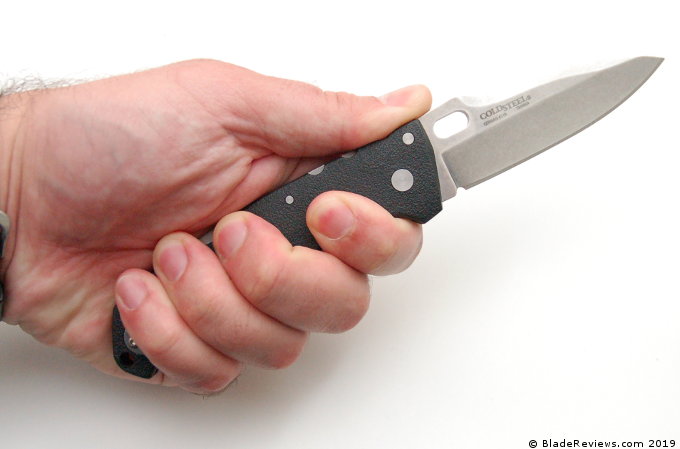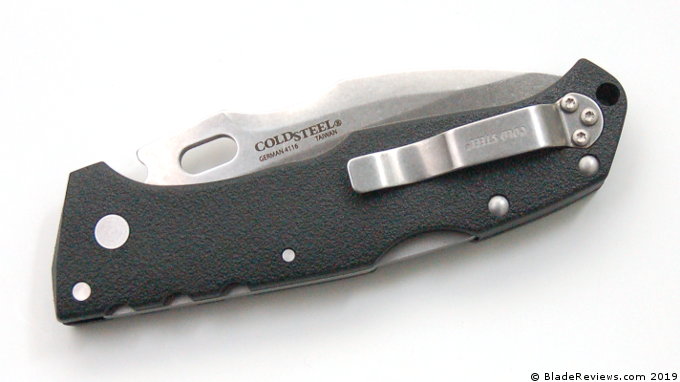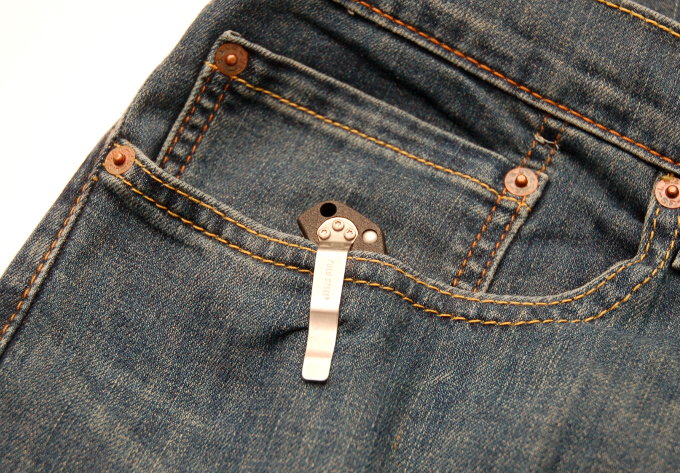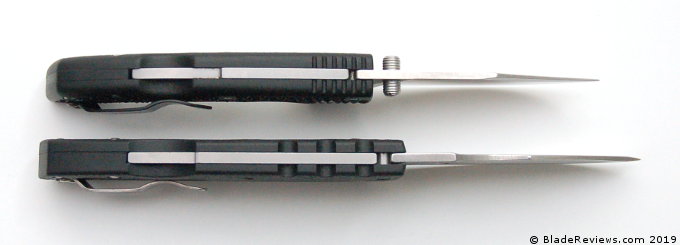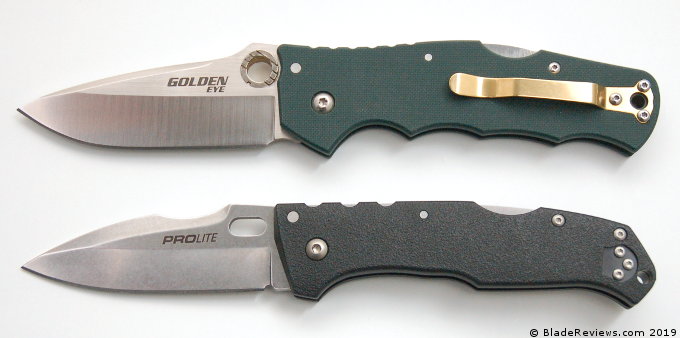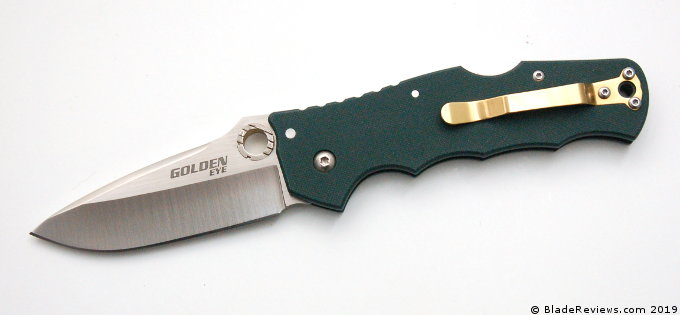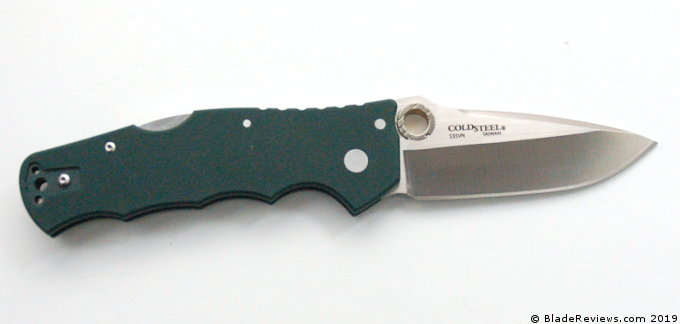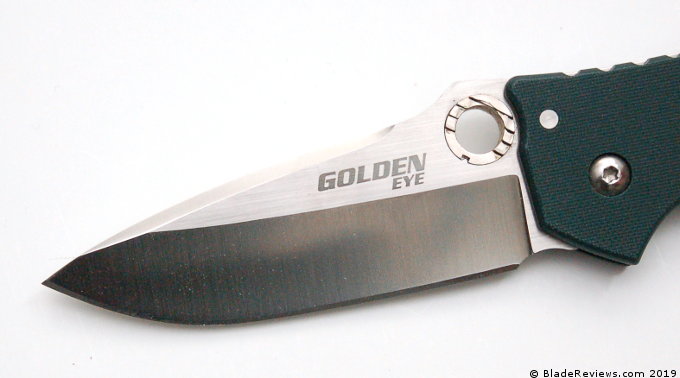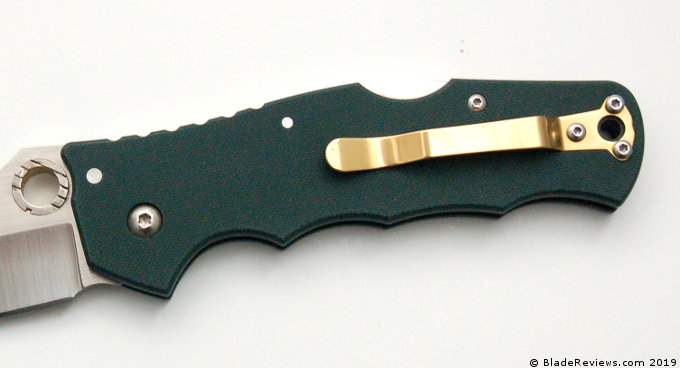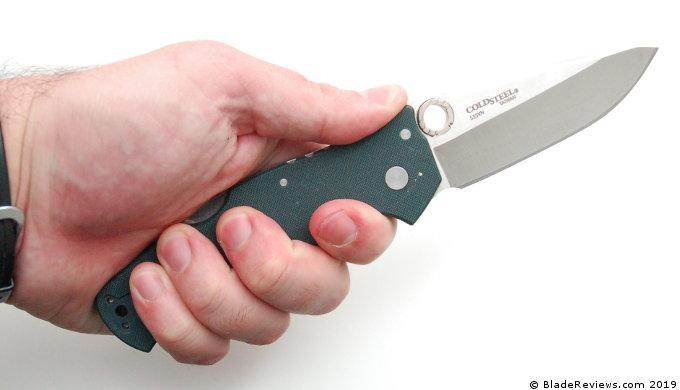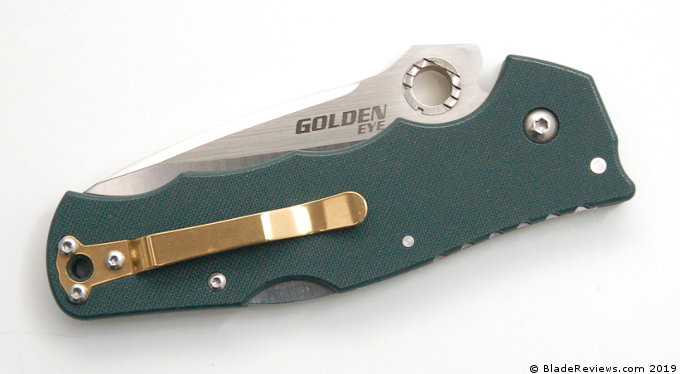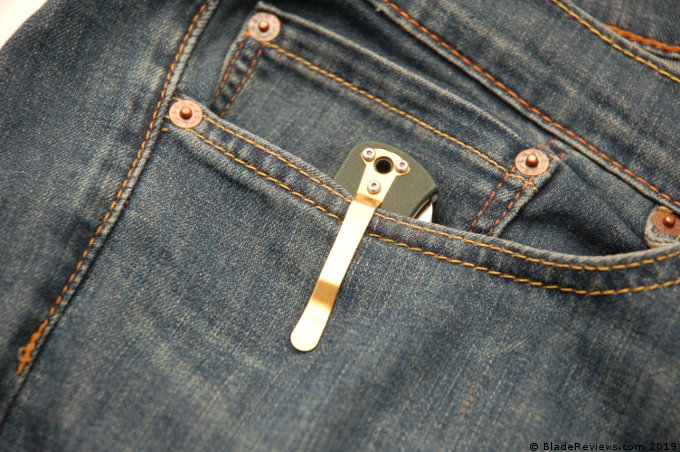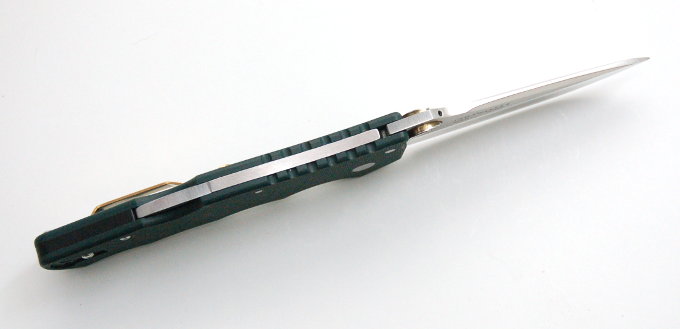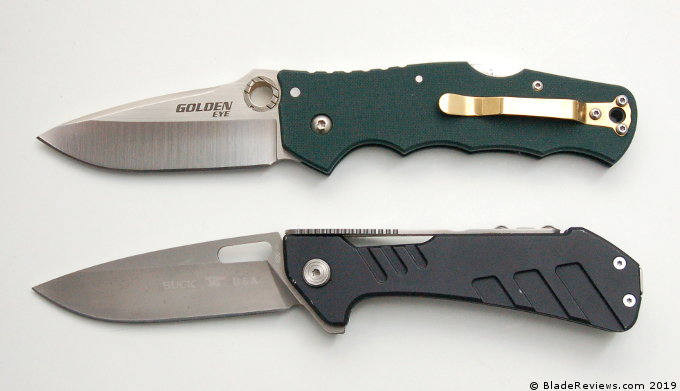Last Updated: July 17, 2021
If you have handled the original Benchmade Bugout, then it won’t take any explaining to understand why the Mini Bugout is such a big deal. The original Bugout was a home run for Benchmade. Slim, lightweight, capable, and attractive with its classic drop point hunter lines and vibrant blue handle.
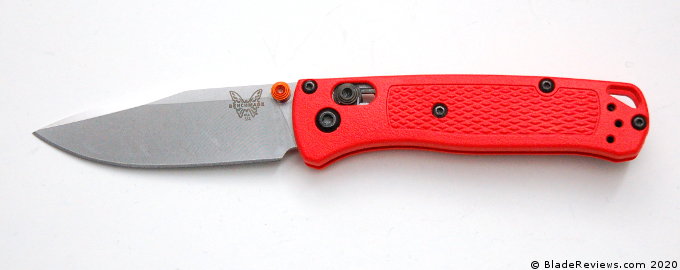
Buy the Benchmade Mini Bugout at BladeHQ
Buy on Amazon
So the thought of shrinking down the full size Bugout to something approximating the dimensions of a Mini Griptilian is a no brainer. The question is whether it works. Most of the time you can’t simply shrink down a knife and expect it to feel and perform properly. Did Benchmade get it right with their Mini Bugout? That’s the eternal question.
General Dimensions and Blade Details
The Mini Bugout has an overall length of 6.49″, a 2.82″ blade, and weighs 1.5 ounces. Captain Obvious tells me this is a thin, light, and small knife. It’s perfect for EDC. It would be a great choice hiking, perhaps as a backup knife depending on what you are asking of your blade. The high visibility orange handle seems to suggest it was designed with outdoor use in mind. Personally, I use it for urban EDC, but in a situation where “ounces equal pounds, and pounds equal pain” this knife should save you some pain.
Here’s a size comparison with the full size Benchmade Bugout:
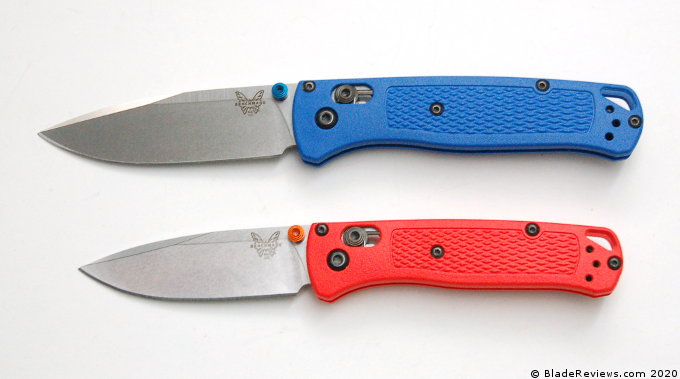
An obvious comparison would be with the Spyderco Dragonfly II. I’ve referred to the Dragonfly II as a “magic trick” in the past, and the Mini Bugout helps illustrate that point. While the Mini Bugout is very small, the Dragonfly II is still smaller thanks to it’s curved handle and finger choil. The DF2 is just a crazy small knife and it’s amazing that it still offers a full grip and all the utility of a larger folding knife.
Here’s the Mini Bugout next to the Dragonfly 2:
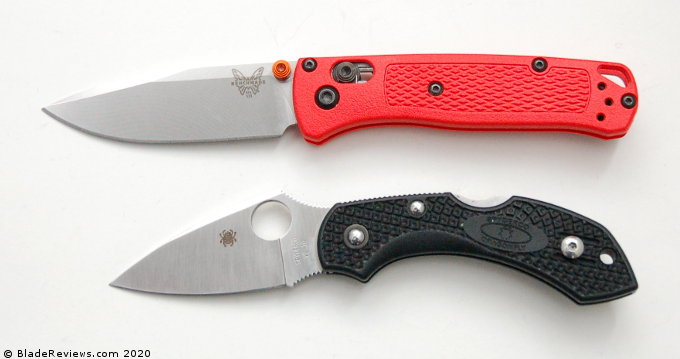
The blade is the same simple drop point on the full size Bugout. It has been shrunken down, but it’s still a lot of blade. That is one place where it outshines the DF2; you are getting a significantly longer blade, which could be more useful in some situations. That long blade is paired with a thin full flat grind and a simple swedge. The end result is excellent slicing blade geometry and a good tip.
My particular knife came with a blade made of S30V steel. S30V is now considered to be a classic stainless steel. Back in the day it was almost considered a super steel. It’s still a good upgrade over budget blade steels like 440c, AUS 8, 8Cr13MoV or even VG-10 and 154CM.
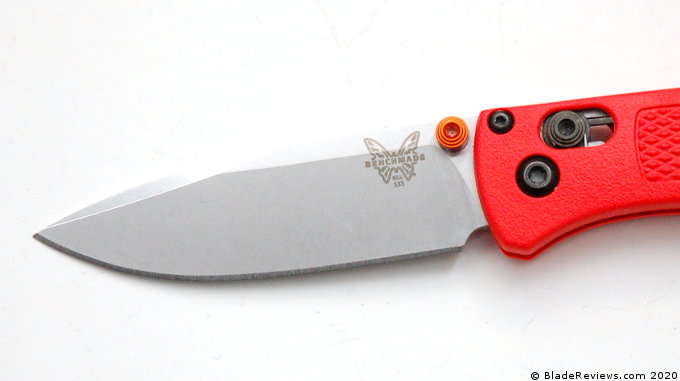
I have found that the heat treat plays a significant role in S30V. Obviously a good heat treat is significant for any knife, but I’ve found S30V blades on factory knives perform differently. For example, I’ve always considered the S30V on my Para 2 and Sage 1 to be reluctant to sharpen. In contrast, Benchmade heat treats their S30V in a way that is much easier to sharpen. That combined with their thin blade and edge geometry make their S30V blades a blast to use. For example, their old Volli model is a beast of a knife in S30V. All this to say, Benchmade seems to have mastered S30V and the Mini Bugout is no exception.
I’ve used mine mostly for opening packages. Lately I have been doing a lot of bulk buying and re-selling (of all sorts of things), so I’ve been working with a lot of cardboard. Whether that’s opening packages, resizing packages, or breaking down boxes, I have gone through an inordinate amount of cardboard in addition to my usual every day carry tasks. The Mini Bugout has been a laser. It is excellent at slicing, is easy to control, it holds a great edge, and is simple to sharpen. If you want a lightweight user this little Bugout will get the job done with style.
Handle, Ergonomics, and Pocket Clip
The handle is a shock of bright orange Fiberglass Reinforced Nylon (FRN). You will have a harder time misplacing this knife, and it’s a great choice if you are going to take this knife camping. Benchmade also offers the knife with a white handle. That could be a cool. I’ve never owned a white knife before, and wonder how it will hold up with use. Hopefully they will offer some more colors in the future.
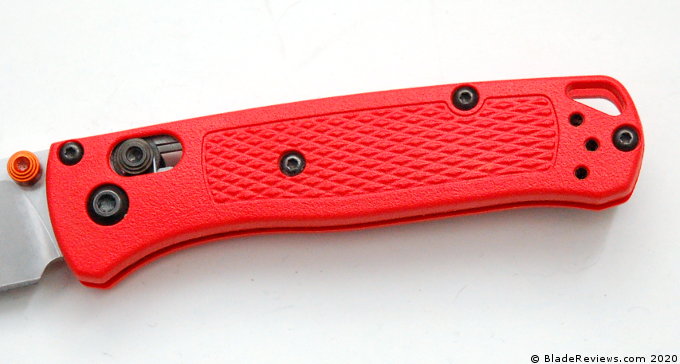
Inside the handle you have tiny steel liners. Contrast that with the heavier Mini Griptilian, which has steel liners stretching almost the entire handle. Despite the short liners, the Mini Bugout is still extremely rigid. That is likely due to the way they placed the standoff, and the engineering of the handle.
And much like the full size Bugout, Benchmade color matched the standoffs and thumb stud. That gives the knife almost a jewelry like quality. It’s a little thing, but I think it’s nice touch that you don’t see on many knives at this price point.
I had concerns regarding the ergonomics of the Mini Bugout. You can’t always shrink down a knife handle and expect it to work. In this case, it works. The Bugout had a simple handle design to begin with, which allowed the good ergos to shrink with the rest of the design. There is room for a full 4 finger grip (just barely), and Benchmade has used an appropriate amount of texturing. Mild jimping, diamond plate, and a soft texture to the rest of the handle all come together to offer grip without gripe.
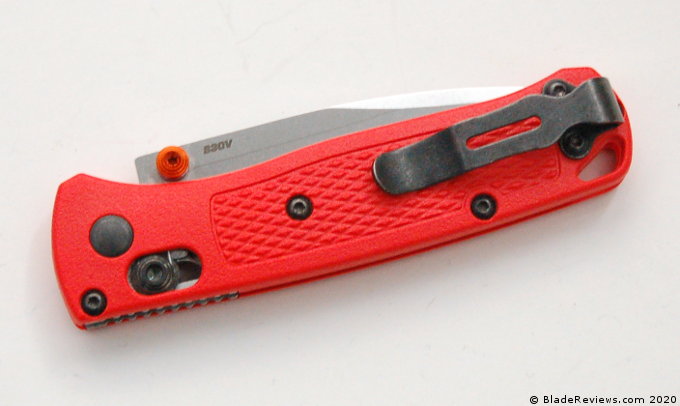
Let’s turn to the pocket clip. It’s the exact same clip found on the full size Bugout. It’s a black oxidized deep carry clip. This is a shorter clip compared with Benchmade’s standard offering found on models like the Griptilian, but it still gets the job. And if you like deep carry clips, then you might say it gets the job done better then Benchmade’s standard clip.
Here’s your in the pocket shot:
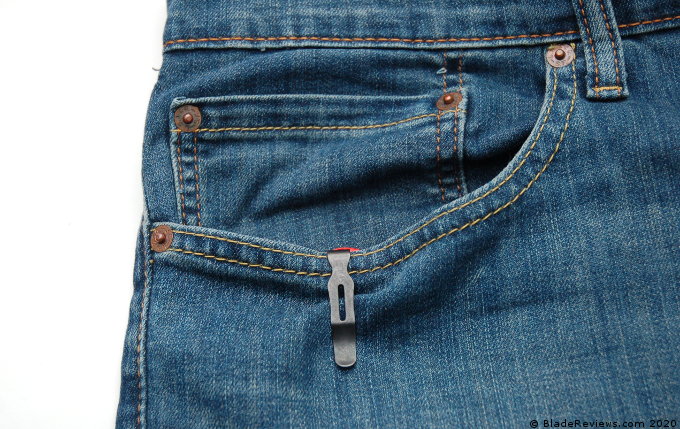
As you can see the knife disappears into the pocket. It is uber discreet. And the clip has excellent spring retention as well. The knife is held firmly in place and doesn’t float around. As for how the knife carries, well, I hardly notice the knife. Much like the Dragonfly II I quickly forget it’s there until the time comes to use my knife. The original Bugout carried well, but it was a longer knife so it took up some real estate. This Mini Bugout is even less noticeable.
Deployment and Lockup
Like many Benchmade knives, the Mini Bugout comes with dual thumb studs and an axis lock. The thumb studs are easy to get to, and the blade pops out with the flick of a thumb. This knife comes with phospher bronze washers and the action is smooth and reliable. Really there isn’t much novel about the thumb studs or washers here. It’s exactly what you would expect if you have owned a Benchmade like this before.
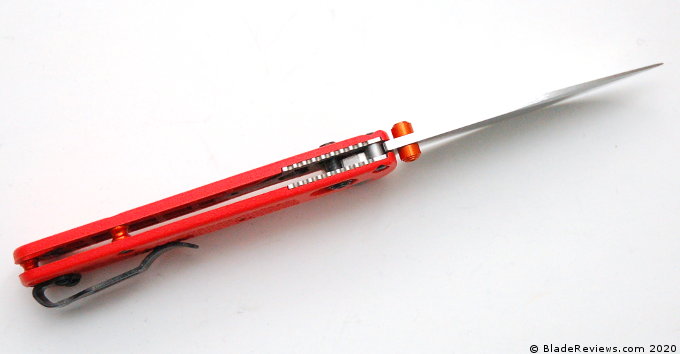
And the Axis Lock is just like all the other axis lock knives I have owned. It works great, and continues to be one of my favorite locks. In fact, I think Benchmade may have made tiny improvements over the years as this knife has absolutely no blade play, up or down. In the past a common critism is that Axis lock knives would have a little side to side blade play in them. I wouldn’t be shocked if that developed over time, but I’ve actually used this knife pretty hard.
We have had a lot of rain here in Florida, and our stand of bamboo in the back corner of the yard has started sending out runners all over the place. Within a few days you can have a 6 foot tall bamboo shoot sprout up. A few dozen of them came up in our yard and I used the Mini Bugout to slice through them. Probably a bit much for a little knife like this but the Mini Bugout was up to the task.
Here’s a parting size comparison with the Benchmade Mini Griptilian:
I like both knives, but the Mini Bugout is even thinner and lighter. Personally, the Mini Bugout gets the nod over the Mini Griptilian.
Blade centering is off by a hair, but still acceptable in my book.
Benchmade Mini Bugout Review – Final Thoughts
The Mini Bugout is a smaller version of the already great Bugout. And the nice thing is that you don’t give up much with this smaller knife. I have done everything with the Mini Bugout that I would have done with the original Bugout, and I suspect that’s going to be the same story for a lot of people. Sure, there is the occasional use case where it’s better to have a bigger folding knife, but for most tasks you will be fine with the Mini.
The knife is well made from premium materials. Fit and finish is great, and there are enough details to make it feel special. Unless you have Andre the Giant sized hands, I suspect you will find this Mini Bugout to be fully functional. It’s everything you need and nothing you don’t. It’s a great ultra light EDC piece and I can easily recommend it.
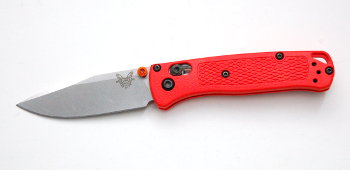
Benchmade Mini Bugout – From $250.00
From: BladeHQ
- LIGHT AS A FEATHER: And incredibly tough; Ideal for hiking, camping, and backpacking, and made for everyday use; A lightweight, go-anywhere tool
- CPM-S30V STEEL: For first-rate edge retention and corrosion resistance; Precision drop-point construction for strength and versatility. Factory in Oregon City, Oregon.
- FULLY AMBIDEXTROUS GRIVORY HANDLE: Has an ergonomic textured grip and is molded from glass-filled nylon for superior durability.
- AXIS LOCKING MECHANISM: Ensures safety and a smooth open and easy close; Reversible clip; Lanyard hole for versatile carry options.
- YOURS, FOR LIFE: Benchmade will re-sharpen your knife to a factory edge for free, for the life of the knife. Benchmade LifeSharp services includes cleaning, oiling, adjustments, and re-sharpening.
I recommend purchasing the Benchmade Mini Bugout at BladeHQ or Amazon. Thank you for reading.
